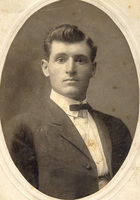
The Spanish Influenza epidemic of 1918, one of the world’s deadliest and swiftest pandemics, swept over West Virginia during October of that year.
In 1918, the United States was involved in World War I, and thousands of young men had been inducted into the military. The first reported cases of Spanish Influenza did not occur in Spain but rather are thought to have occurred amongst soldiers at Fort Riley, Kansas, in March 1918. Troops being sent to Europe carried the disease with them and soldiers and civilians alike quickly succumbed. By summer of that year the epidemic had spread worldwide, and thousands were dying from it.
The disease moved rapidly. Victims of the virulent virus would seem healthy one minute and then within a matter of hours be so debilitated as to be unable to walk. Those afflicted experienced severe weakness, generalized body aches, sore throats, and high fevers, often accompanied by delirium. Pneumonia was a common and deadly complication, as there were no antibiotics to fight viral or bacterial infections. One peculiar and frightening aspect of the epidemic was that those killed were mostly young healthy persons rather than the debilitated and elderly as with other diseases.
On October 5, 1918, the West Virginia superintendent of health sent a letter to county health officers ordering that all cases of the disease be reported, all affected persons be quarantined, and all public places be closed. Many people wore face masks when they went out in public and while caring for the sick.
Despite these measures, 71,079 West Virginians were reported as having contracted influenza between October 15 and November 15, and 2,818 were reported as having died. The majority of deaths were aged five to 39. In that year, 25 percent of all reported deaths in West Virginia were due to influenza and its complications. It should be noted that the exact number of the state’s influenza victims is unknown. Physicians and nurses were overwhelmed and accurate records were not kept. Many health care providers were not able to file reports and others inaccurately estimated the numbers of cases in their area.
During the height of the epidemic in West Virginia, entire communities were without medical aid. There were severe shortages of doctors, nurses, medical supplies, and caskets. Often doctors and nurses succumbed to the disease. Most victims were cared for at home as there were few hospitals.
The epidemic left West Virginia and most of the United States as quickly and mysteriously as it arrived. It was reported as having subsided in the state by the end of October 1918, having left a deadly path of destruction.
This Article was written by Michael M. Meador
Last Revised on October 05, 2017
Sources
Chamberlain, Lorna. The Flu Epidemic of 1918. Goldenseal, (Winter 1990).
Persico, Joseph. The Great Swine Flu Epidemic of 1918. American Heritage, June 1976.
Report of the State Health Department Charleston. 7/1/1918-6/30/1919. Annual Report.
Cite This Article
Meador, Michael M. "The Influenza Epidemic of 1918." e-WV: The West Virginia Encyclopedia. 05 October 2017. Web. 26 July 2024.



Comments?
There aren't any comments for this article yet.
Click here to read and contribute to the discussion →